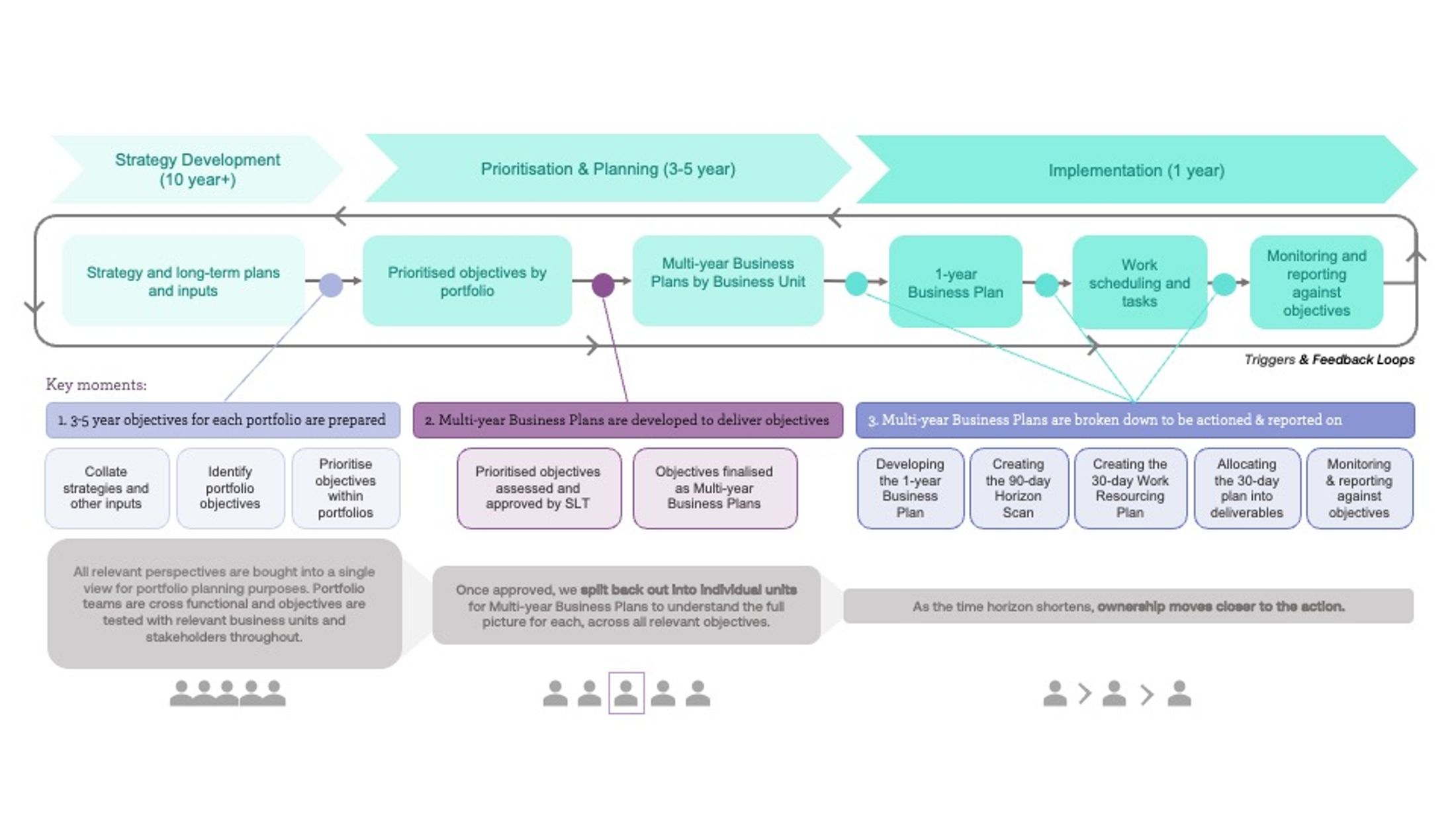Our Opportunity
The organisation was seeking a partner to help them create a cohesive way of working to better deliver on their purpose.
Staff were frustrated by:
Complicated and inefficient systems and processes.
Onerous approval processes, unclear reporting lines and work coming from different directions.
A lack of time available for high impact delivery work.
Objectives
Bridge the gap between organisational strategy and delivery.
Deliver better on strategic priorities.
Give staff more time to focus on delivery work.
Our Approach
This was going to be a significant change for the organisation as it challenged them to shift away from current ways of working to do things fundamentally differently. We worked with them to stand up a programme so we could help simplify ways of working and they could address government mandated cost savings in one coordinated programme. We had fit for purpose structures in place to provide the right level of support, engaged with people in ways that worked for them, and adapted as clients needs changed along the way.

What we did:
Brought people on the journey: We wanted to ensure we engaged with people in a way that worked for them so that they could contribute to the changes proposed. This ranged from one-on-one feedback sessions, drop ins and information sessions through to working closely with the leadership team to empower them as sponsors of the change.
Functional Review: We reviewed how well the organisation’s functions were set up to deliver on their strategy. This resulted in a proposal to simplify reporting lines, reduce duplicated effort and consolidate support functions. The two-week consultation, was quick, well coordinated and limited unnecessary disruption to staff.
Prioritisation: We adapted the interventional logic mapping framework to help guide the senior leadership team to identify priority areas to focus our operating model design. These formed the basis of our future state design focus.
Future state design: We used a staged design process to codesign simpler future state service blueprints with staff and leaders from across the business. We then combined the blueprints to form one way of working together in a radically different way. The result was a portfolio approach for planning and prioritisation, where cross-functional teams develop multiyear priorities within a portfolio. In this model, priorities, trade offs and impacts are visible for all teams.
Workforce analysis: Our wide-reaching survey made the working reality of over one third of the organisation visible to its senior leaders, in a way not done before. Insights were critical to inform key improvements for the design and rallied senior leaders together to focus on giving staff more time for high impact delivery work.
Implementation planning: We co-created a series of project briefs to assist the client to prioritise and resource the work required. We then sorted these into tranches to set a clear pathway towards delivering the new way of working, over the subsequent 2-3 years.
Our Services
Operating Model Design
Service Design
Change Management
Business Model Assessment
Project Management
Outcomes
Simplified reporting lines and accountabilities.
Breaking down siloes and created cross functional teams focused on delivering strategic priorities together.
Reduced administrative burden which increases time for high impact delivery work.
Improved alignment of work to strategic objectives making it easier to communicate impact to Ministers and Partners.